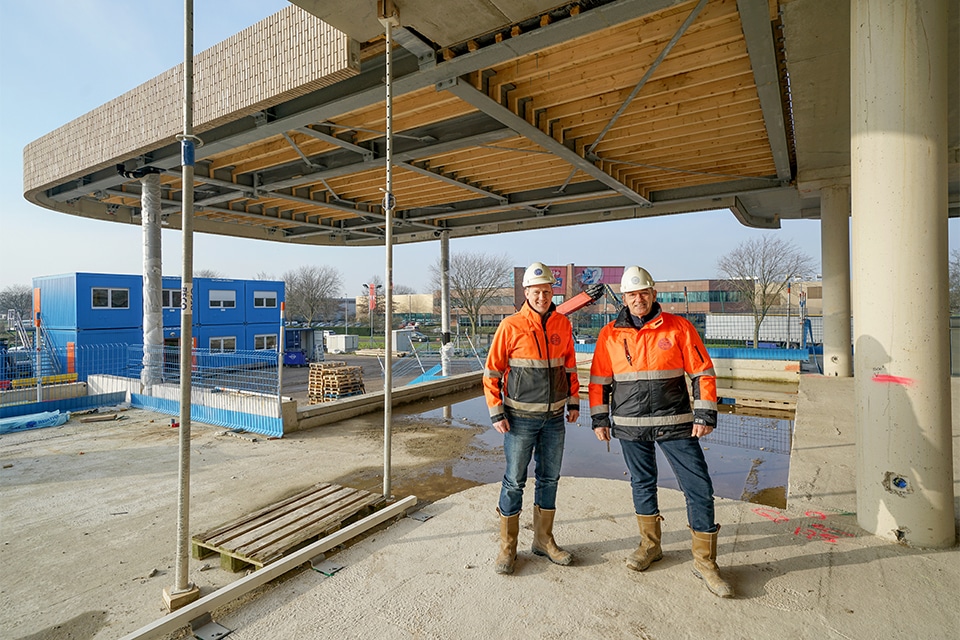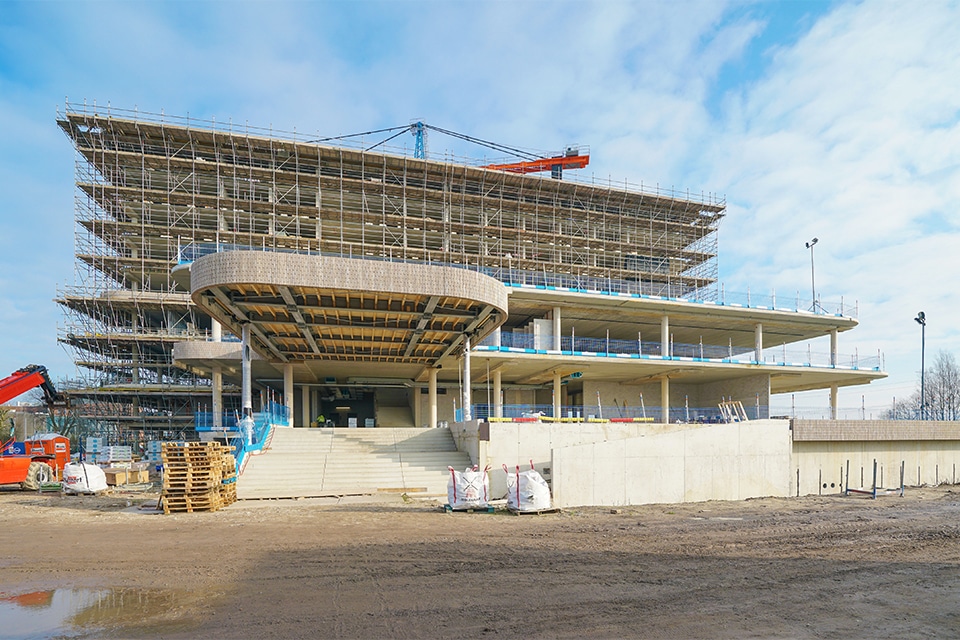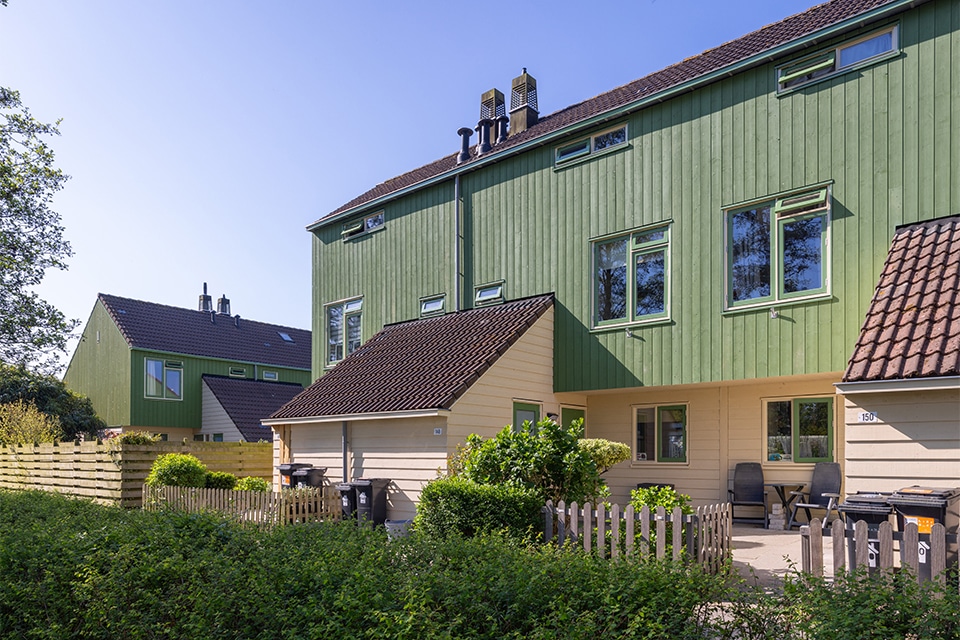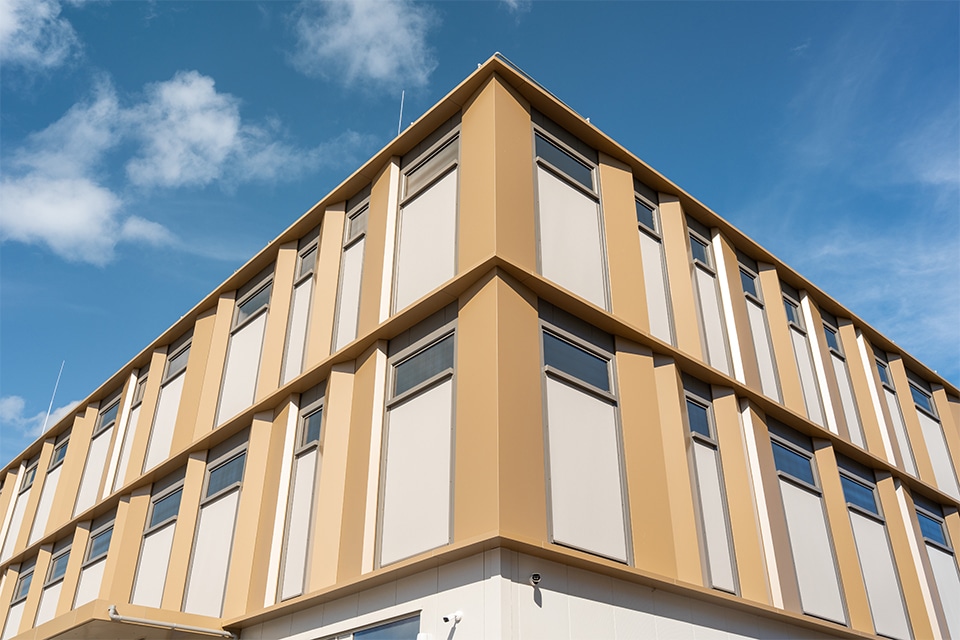
Van der Valk Exclusive Hotel Woerden: Hotel for the next generation
The first plans for a Van der Valk Exclusive Hotel in Woerden date back to 2018. Five years of preparing, planning, going through procedures and meetings later, agreement was finally reached with the municipality to build a new branch of the hospitality company almost on the A12 motorway. Obviously a beautiful sight location, the family has a patent on that. In October 2023, the first pile went into the swampy ground and in the spring of 2026 the first guests can make their appearance in the hotel that has seven, no eight, or in time perhaps even ten floors.
Van der Valk Woerden consists of a wide two-story substructure that houses the lobby, a wellness with fitness and a swimming pool, large restaurant and conference center. On top of that is a tower with the hotel rooms. "The initial approach was 125 rooms with the possibility of expanding this later," says Rik van der Valk, who forms the management team with his sister Nikki. "Corona caused strong price increases and thus a different business case. To recoup the extra investment, we consulted with the municipality and nearby businesses about possible additional floors. During construction, the permit for an additional layer came in, bringing us to 144 rooms. Perhaps in time the tower will get two more layers, the construction is prepared for that."

Round shapes
The hotel differs from most of Van der Valk's other locations. "It looks like Deventer (completed in 2021; ed.) but with rounded corners," Van der Valk continued. "It was designed by our in-house architect Teunissen and I think the result is very successful. The round shapes also recur inside, for example in the swimming pool. In terms of routing and guest experience, it also incorporates all the experience of the other hotels. The latter is the best every time. We are building for the next generation of guests with their modern wishes, so that the hotel can last for decades and can soon pass on to the next generation. And I learn an enormous amount from the whole construction process. I myself supervise mainly the structural work, Nikki and my sister-in-law Amber do the interior, and as a sounding board I can always call on my parents."
Maintaining flexibility
Now Van der Valk is not an average client, work planner Arnoud van Broekhoven and foreman Maarten Bolle know. Both are employed by contractor Van Omme & De Groot and already have quite a few Toekan hotels to their name. "Then you quickly learn that things can change along the way," Van Broekhoven begins. "Our added value lies partly in the great flexibility we can offer. On the other hand, we have a relatively large amount of freedom in working out and optimizing the designs."

Solid foundation
Piles from 12.5 to 18 meters were driven for the foundation. On these were placed the piers, beams, elevator wells and the pool, and finally the basement floor. The shell is a combination of cast-in-place and precast concrete. The foundation, basement floor, walls and columns were cast in situ. The stairs, landings, elevator shaft walls, balcony slabs and parapets were prefabricated, while the storey floors were constructed with wide slab floors. To obtain a column-free conference hall, 40-cm-thick 14.70-m-long hollow-core slabs were used with an 8-cm compression layer.
Parapets
On the ground, 1st and 2nd floors, prefabricated parapets with vertical stone strips are used. These are attached to the floor edges with heavy angle lines. Van Broekhoven: "On the 3rd and 8th floors, precast balcony slabs, including parapets, are poured to the floor with iso baskets. In the factory, the parapets were produced in advance and then placed upside down in the mold of the balcony slabs. After the balcony slabs were poured, they were turned 180° so that we could put them in place on site directly from the truck. If one or two additional floors are eventually added, the precast roof slabs with cast-in-place parapets can be sawn off at the location of the iso baskets, after which they can be moved to the top floor. Only then a steel structure will have to be made on which these can be affixed."
Water buffer tanks
During the shell construction phase, installer Linthorst also came up with an ingenious idea: place a couple of water buffer tanks near the building, which you fill with hot water at times of electricity surplus or cheap energy and can use at peak times with minor additional heating, says Van Broekhoven. "On our advice, the empty space under the terrace was used for this purpose. By slightly lowering the foundation beams under the terrace and pouring through the basement floor, a perfect space for the tanks was created."
Standing under the impressive steel structure of the main entrance, Bolle and Van Broekhoven look forward with great confidence to the further completion of this project. "When you are used to working for Van der Valk, you don't let yourself be surprised easily anymore and you actually start to appreciate the freedom in working. Just give us another client like that."




